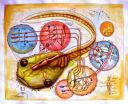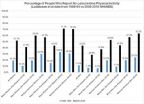(Press-News.org) A new UBC Sauder School of Business study shows that teenagers who work at summer or evening jobs gain a competitive advantage later in life. Developing early knowledge of the working world and how to manage in it, they are more likely to find good employment and earn more money in the future.
"With summer in full swing and kids sitting on the couch, parents are wondering whether to push them to find a job," says Sauder professor Marc-David L. Seidel, who co-authored the study. "Parents may think that their kids could do better than a job at the local fast food joint. But our study shows even flipping burgers has value – particularly if it leads to part-time work later during school term."
Seidel and his co-authors found teens in part-time jobs progress to better-suited careers since the early exposure to work helps them hone their preferences. They enhance their soft skills, acquire better references and learn how to job-hunt more successfully – establishing wider career networks.
The more hours that 15-year-olds work, particularly during the school term when they have to learn to manage their time, the better their career prospects, says Seidel. The study showed benefits arose from working up to as much as 33 hours per week during the school year or 43 hours during summer.
Researchers used data from the Statistics Canada Youth in Transition Survey. This represented 246,661 15-year-old Canadian teenagers, looking at their work history over a 10-year period beginning at age 15 and ending at 25 in 2009.
"Adolescent labour has been stigmatized as exploitative with many parents opting to put their kids in summer camp rather than summer jobs," says Seidel. "However, our research shows that working can offer educational and developmental opportunities that prepare adolescents for the real world."
INFORMATION:
Background
The study, Beneficial "Child labor": The impact of adolescent work on future professional outcomes appears in the latest edition of the journal Research in the Sociology of Work. It was co-authored with Sauder Ph.D. student Marjan Houshmand and Sauder Commerce Scholar Alum Dennis G. Ma.
Summer McJobs are good for kids, says UBC study
2014-07-07
ELSE PRESS RELEASES FROM THIS DATE:
For a holistic approach to POW trauma
2014-07-07
The full circumstances of U.S. soldier Bowe Bergdahl's captivity have yet to be revealed. During his tour of duty in Afghanistan in 2009, Bergdahl was captured by the Taliban and held in captivity for five years until a controversial prisoner exchange led to his release on May 31. Bergdahl has been accused of deserting his post and advocating the release of Afghani prisoners.
"We do know that he suffered horrific conditions, tortured and kept in a metal cage in darkness for weeks on end," said Prof. Zahava Solomon, an Israel Prize laureate, Professor of Social Work and ...
Patient patience and pandemics
2014-07-07
Allowing patients to choose which hospital they attend when suffering illness during a pandemic rather than assigning them to a specific healthcare facility is appealing to patients during such a crisis. However, such a patient-centric hospital capacity management is conventionally viewed as inefficient system-wide. According to research published in the International Journal of Mathematics in Operational Research, an incentive-based approach for hospital capacity management can not only accomplish a high efficiency for a concerned hospital system but satisfy patients' ...
World Cup chemistry: The science behind the 'brazuca' (video)
2014-07-07
WASHINGTON, July 7, 2014 — The World Cup final is almost here, and no matter which two teams meet for the title match, there's one thing they'll both need to win: the ball. This week, Reactions examines the chemistry that goes into making the "brazuca," and what makes it different from most other soccer balls out there. The video is available at https://www.youtube.com/watch?v=1XNTfslUzt8.
INFORMATION:
Subscribe to the series at Reactions YouTube, and follow us on Twitter @ACSreactions to be the first to see our latest videos.
The American Chemical Society is a nonprofit ...
Infant toenails reveal in utero exposure to low-level arsenic, Dartmouth study finds
2014-07-07
Infant toenails are a reliable way to estimate arsenic exposure before birth, a Dartmouth College study shows.
The findings appear in the Journal of Exposure Science & Environmental Epidemiology. A PDF of the study is available on request.
A growing body of evidence suggests that in utero and early-life exposure to arsenic may have detrimental effects on children, even at the low to moderate levels common in the United States and elsewhere. The fetus starts to develop toenails during the first trimester, making them an accurate measure of exposure to arsenic during ...
GVSU researchers find moral beliefs barrier to HPV vaccine
2014-07-07
GRAND RAPIDS, Mich. — A survey of first-year Grand Valley State University students showed the biggest barrier to receiving a Human Papillomavirus (HPV) vaccine was moral or religious beliefs, or a perceived promotion of sexual behavior, according to graduate physician assistant researchers.
Physician Assistant Studies majors Jamie Phillipich and Margie Webb surveyed 1,000 incoming students last fall as part of their master's research project. They assessed the influence media has on the perception of HPV and vaccine compliance, and presented their findings at the Annual ...
Dodging dots helps explain brain circuitry
2014-07-07
PROVIDENCE, R.I. [Brown University] — A neuroscience study provides new insight into the primal brain circuits involved in collision avoidance, and perhaps a more general model of how neurons can participate in networks to process information and act on it.
In the study, Brown University neuroscientists tracked the cell-by-cell progress of neural signals from the eyes through the brains of tadpoles as they saw and reacted to stimuli including an apparently approaching black circle. In so doing, the researchers were able to gain a novel understanding of how individual ...
Satellites reveal possible catastrophic flooding months in advance, UCI finds
2014-07-07
Irvine, Calif., July 7, 2014 – Data from NASA satellites can greatly improve predictions of how likely a river basin is to overflow months before it does, according to new findings by UC Irvine. The use of such data, which capture a much fuller picture of how water is accumulating, could result in earlier flood warnings, potentially saving lives and property.
The research was published online Sunday in the journal Nature Geoscience.
A case study of the catastrophic 2011 Missouri River floods showed that factoring into hydrologic models the total water storage information ...
Why 'whispers' among bees sometimes evolve into 'shouts'
2014-07-07
Let's say you're a bee and you've spotted a new and particularly lucrative source of nectar and pollen. What's the best way to communicate the location of this prize cache of food to the rest of your nestmates without revealing it to competitors, or "eavesdropping" spies, outside of the colony?
Many animals are thought to deter eavesdroppers by making their signals revealing the location or quality of resources less conspicuous to outsiders. In essence, they've evolved "whispers" in their signals to counter eavesdropping.
But some species of bees in Brazil do the exact ...
Obesity, large waist size risk factors for COPD
2014-07-07
Obesity, especially excessive belly fat, is a risk factor for chronic obstructive pulmonary disease (COPD), according to an article in CMAJ (Canadian Medical Association Journal)
Excessive belly fat and low physical activity are linked to progression of the disease in people with COPD, but it is not known whether these modifiable factors are linked to new cases.
A team of researchers in Germany and the United States looked at the relationship of waist and hip circumference, body mass index (BMI) and physical activity levels to new cases of COPD in a large group of men ...
Less exercise, not more calories, responsible for expanding waistlines
2014-07-07
Philadelphia, PA, July 7, 2014 – Sedentary lifestyle and not caloric intake may be to blame for increased obesity in the US, according to a new analysis of data from the National Health and Nutrition Examination Survey (NHANES). A study published in the American Journal of Medicine reveals that in the past 20 years there has been a sharp decrease in physical exercise and an increase in average body mass index (BMI), while caloric intake has remained steady. Investigators theorized that a nationwide drop in leisure-time physical activity, especially among young women, may ...


